It was only a matter of time before somebody incorporated a full-on ballistics computer into a rifle scope. Apparently that time is now, and that somebody is Revic. As Revic is young and this is their first product, my expectations were tempered. Turns out they didn’t need to be. The PMR 428 delivers on its promises . . .
On the outside, the PMR 428 looks mostly like a typical, but obviously high-end, high-zoom scope. It’s a 4.5-28×56 job with a 34mm tube and it’s 14″ long.
At 47 ounces, the PMR 428 is heavy. Sure, if you look to Vortex you can find scopes of equivalent zoom and size at the same weight (Razor 4.5-27×56 weighs 48 oz), but most will come in six to eight ounces lighter. Of course, none of them have internal ballistics calculators.
The PMR’s body and turrets are anodized in a gray/bronze finish. Machining, fit, and finish are great all-around. It does not appear that any corners have been cut in order to deliver a product at a price — $2,750 — competitive with similar, but ballistics computer-free optics.
Instead, Revic states that their pricing is possible because they’re consumer-direct. You won’t find these scopes in stores or via other distribution channels. Only through the Revic website. Most companies sell to a distributor, who sells to a retailer, both of whom need to turn a profit on the process. This probably doesn’t explain all of it, but it’s reasonable to believe it explains much of it.
As I understand it, Revic does in-house testing, final QC, design, and R&D. Much of the technical design is contracted to an engineering firm in Germany. Manufacturing and initial QC is done in Japan, likely at one of the companies responsible for many of the high-end scopes we’re familiar with on the U.S. market that aren’t German or Austrian.
The end result is an optic that feels familiar to me. Lift the turrets to unlock them, spin them through precise, clean clicks to adjust. Side parallax adjustment glides smoothly and is very close, for my eyes, to matching the ranges marked on the dial. For more on how that works, read this article.
Rotating the ocular bell moves the PMR from 4.5x zoom to 28x. The fit is snug and precise, rotating smoothly but with at least enough resistance to ensure it doesn’t move unless you want it to.
Helping turn that dial is the battery compartment. Revic’s PMR 428 runs on a single lithium AAA battery.
Over on the parallax dial, a set of buttons controls what’s going on inside. Depress and hold the “enter” button for three seconds to turn the scope on. What can the PMR 428 do for you?
It has internal sensors to determine compass heading, incline, cant, pressure, and temperature. The user can input wind speed and direction as well as latitude. This is everything necessary for the computer to calculate ballistic trajectory with stunning accuracy. Well, once you’ve loaded your profile…
The very first thing you need to do with your new PMR 428 is download the app and get your ballistic profile(s) loaded into it. With that done, you’ll sync your smartphone with your scope via Bluetooth and load the desired profile. Once the profile is on the scope, the phone is no longer needed.
Now hit the range. Zero your rifle at any distance, then use the scope’s internal menu on its internal display to inform the electronics that your point of aim aligns with your point of impact at the distance you’ve input and at the point to which the elevation turret is dialed. Now the turret and the computer are synced up.
Want to align “0” on the scope turret with your chosen POA/POI zero? Forget the hex wrenches and set screws and swearing. Simply depress that little silver detent — the tip of a bullet works great — on the top of the turret, and rotate it over to the “disengage” icon. Now the turret spins freely without moving the internal adjustments. When you’re on “0,” push the detent again and rotate the cap insert back to the locked position. Done.
Despite being decidedly non-electronic, this is one of my favorite features on the PMR.
At this point, using the PMR 428’s ballistic calculating functionality is extremely simple. See that “447” up in the display above my target picture? I ranged this target at just shy of 450 yards, and all I have to do to get dialed in for it is turn the elevation turret until the display is showing me “450” or as close to it as possible.
What the PMR is displaying is not actual yardage, but corrected yardage. It’s doing all of the math necessary to compensate for the angle to your target and the atmospheric conditions as compared to when you zeroed the gun.
In fact, I had zeroed my rifle at 100 yards on a different day in different conditions while shooting at a slightly different angle. With the turret dialed to zero on the day the two photos above were taken, the PMR was telling me I’d now be dead-on at 103 yards instead of 100. It provides real-time, near-instant ballistics calculations.
Below the yardage indication is a digital bubble level. Keeping your scope level to the Earth is mandatory for long range shooting, unless you’re prepared to deal with the left/right error caused by inducing even a small cant. Many long range shooters employ a bubble level clamped to the scope tube, scope mount, or Picatinny rail, but having it inside of the scope and easily seen along with your sight picture is a huge plus.
Using the side buttons to cycle through the internal menu, the user can adjust dozens of different settings. Including reticle illumination — 10 brightness settings and seven colors. Plus set display brightness, wind calculation, coriolis calculation, adjust ballistic settings as needed, and much more.
Does it work? Yes. I dialed for that nearly-450-yard target and was dead-freaking-on. Minus slightly under-compensating for a 3:00 wind. But the elevation adjustment was flawless. It also worked for me at 230 yards — exactly dead-on — and shooting at 100 yards on a couple different days when it told me my turret zero was high or low and I dialed up or down for a corrected 100-yard trajectory.
Unfortunately I haven’t had a chance to shoot at longer ranges with the Revic, but I ran simulations on my ballistics apps out to 1,500 yards then dialed the PMR’s turret to the MOA hold indicated by the apps. The PMR’s as-displayed, corrected yardage was always in-sync as long as I had the scope level and atmospherics matched between app and scope. One thing it can do far better than my phone app: instantly adjusting based on shot angle.
Cell phone photos don’t do an optic justice, unfortunately. But suffice it to say that the clarity and colors through the PMR 428 are what you’d expect of Japan’s finest. I’ve seen slightly brighter, but overall we’re right in-line with price point for optical quality. Forgetting the electronic wizardry, the PMR 428 is still an extremely nice scope (and functions as such with a dead battery or otherwise powered-down electronics).
At the end of the day, I think the PMR 428 is missing just one important feature: a built-in rangefinder. Its real-time ballistics calculating magic still only helps if you know the true range to your target. Which, in my mind, somewhat limits its utility.
I can see it for PRS competition or other known-range shooting events and shooting ranges. With nothing but a target map, you could run through stages rapidly dialing for atmospheric- and position-compensated range, all calculated in real-time.
I can see it for hunting and tactical use, where you’ve ranged certain landmarks ahead of time and know approximate distance to target when a target presents itself. At that point, just dial until the correct range is displayed and know that the scope is taking care of the rest.
But for unknown distance shooting, which is most of what I find myself doing, you still need a rangefinder. And many mid-to-high-end rangefinders will do all of the math that the PMR 428 will, providing the shooter with a fully conditions-corrected range and/or corrected adjustment in MOA/Mils.
Sure, it may still be easier or faster to dial the turret while watching a yardage number on a display vs. dialing a turret up 34.25 minutes, for example, but it would be darn close. With the PMR’s capability, you could also use a lighter, less expensive rangefinder without requiring a smartphone ballistics app or a DOPE card to get on target.
But, ultimately, the necessity of still using a separate rangefinder prevents the PMR 428 from being the mind-blowing, all-in-one ballistics solution that it’s so close to becoming. For most of my long range shooting use, where my rangefinder is going to spit out a ballistic solution anyway, the biggest value I’m getting out of the PMR is in its internal bubble level.
Thankfully the price is on-point. Revic is providing all of this built-in ballistics computing technology with a price that’s similar to traditional optics in its category. And, in known-range scenarios, the PMR 428 is dang fast and it’s spot-on.
Specifications: Revic PMR 428 Smart Rifle Scope
Actual Magnification: 4.67x to 29x
Focal Plane: First
Exit Pupil: 8.4mm on low zoom, 2mm on high
Eye Relief: 85mm on low zoom, 82mm on high
Ocular Diameter: 38mm
Objective Diameter: 56mm
Focus Range: 50 yards to infinity
Diopter Adjustment Range: -2.5 to +2.5
Elevation Adjustment Range: 85 MOA
Windage Adjustment Range: 50 MOA
Elevation Travel Per Turret Revolution: 30 MOA
Body Tube Diameter: 34mm
Weight: 47 ounces
Length: 14 inches
MSRP: $2,750
Ratings (out of five stars):
Glass Quality * * * *
Color and clarity is excellent. Brightness average. Overall about average for the price, but above average in general. There’s definitely no penalty going on here to offset some aspect of the electronics. Even viewed as a traditional scope, the glass is right where it should be.
Reticle * * * *
First focal plane with an MOA milling reticle that’s clean, precise, and well-marked. Excellent. It would earn another star with a bit of a “Christmas tree” to make holding for wind easier when also holding for elevation. Of course, I suppose the whole point of this scope is that you’re dialing for elevation, not holding. Plus it has 10 brightness settings and seven color options. It’s a nice reticle.
Turrets/Dials * * * * *
Clean and precise adjustments, smooth locking system, easy-to-read markings, and the easiest turret zeroing ever.
Features * * * * *
Success. The PMR 428’s on-board sensors and ballistics computer work great and they “talk” with the elevation turret with no issues. There’s also a built-in bubble level and the display shows temperature, barometric pressure, compass heading, and more. Easy-to-navigate menus allow in-scope adjustment, or much of it can be done through a Bluetooth-synced smartphone. I think it’s fair to say this scope has more features than anything else on the market right now.
Overall Rating * * * *
Build in a rangefinder and the PMR 428 would be a game changer in the most legitimate sense possible. When used for known-distance shooting, it provides a real advantage. When used for unknown distance shooting, I don’t see a big benefit. Of course, at a price right in-line with much of its competition I’d choose the PMR 428 every time. It’s a slick piece of kit, to be sure.




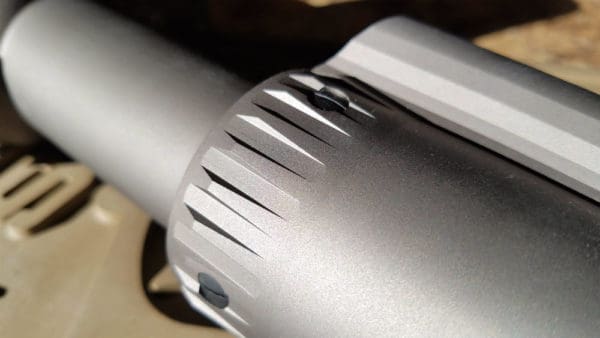


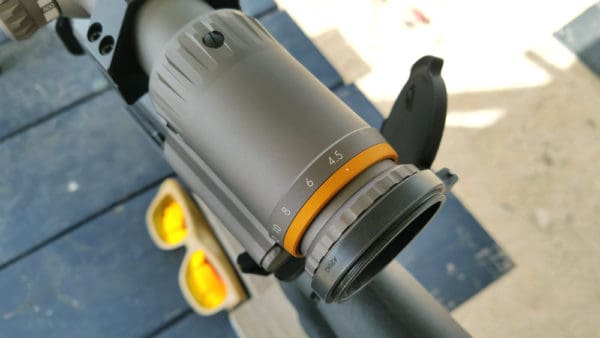

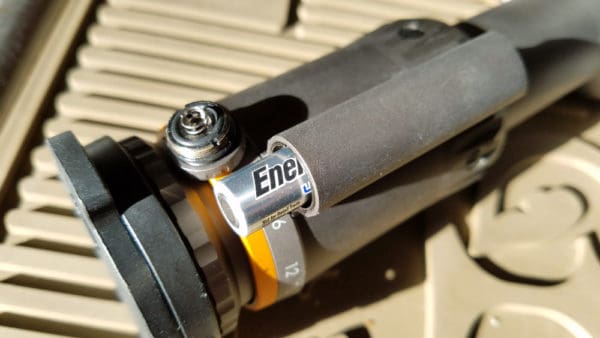








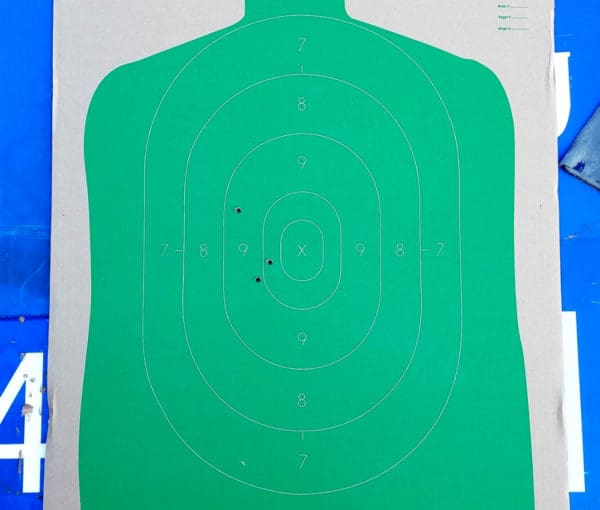


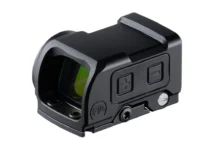


Looks very cool. I especially like the built in bubble levels.
“You won’t find these scopes in stores or via other distribution channels. Only through the Revic website.”
I can see *why* they did that, but it will cost them.
Plenty of folks simply will not hand over that kind of money (+2K) without touching it for themselves, especially a company with little to no reputation beforehand…
the company in basically the scope division for G7 Gunwerks thats who owns it. the spokesman himself is a lens and reticle genius with 20 years experience designing at premier reticles.
I’d settle for a scope with a built in rangefinder. Preferably for $400.
Since the scope already has bluetooth capability; they should add a live link to a weather meter. Something like a Kestrel Sportsman Weather Meter.
Combined with a built in LRF, and you have a nearly complete package.
Still would come in 687% overbudget (well, over my budget) and lacking the single most crucial bit of info – the actual range of the target.
burris makes a scope with a rangefinder and ballistics calculator for $1250 an aiming dot appears on the reticle it also accounts for wind hold. push the button then put the dot on the target and drt
Questions. How many rounds and what caliber were fired? What kind of recoil will the scope hold up to?
Did you do a tall target test or box test to insure that the turrets track true, are repeatable, and reliable?
Probably the best questions asked !!! i have one on gunwerks 338 rum.. the recoil was a challenge butt the right rings will hold it.. repeat ability is great. repeat ability is your guns issue…. you have to get the bullet speed under control and enter ballistics. there are many vidieos on this scope.. it is a bad ass !!! with their gun!!!!! not many guns will be delivered at 1000 yrds out of the box (and do it)
I like what I read but the pice is just a little bit high for my pocket.
I would like to see a range finder on it and make it would think about acquiring one. Anyway I do think it would be a great scope to own so I’ll save my money and in a couple years get one.
I do not believe that it is practical to add ranging functionality to that scope since that would add a LOT of space/bulk and weight (assuming a range finder that can range out to 1000+ yards).
Personally, I would rather have a separate range finder just for physical reasons. And, I like having physically separate functions so that I can keep part of my equipment in the game when one piece fails. Or in this particular case, I could begin using a new range finder without having to sight-in my rifle again.
You have to know the range first! Without that, you are “dead in the water”
Seems to me that if you sighted in your equipment at different ranges, with the same ammo you intend to hunt with, all this costly technology, for the most part is not really necessary.
I’d rather put my money (if I had any) in a good range finder and rifle, as well as good ammo.
I have owned one for a couple weeks now, zeroed and shot out to 550, in 50 yard increments. first round center hits the whole way. I bought this for a coyote rig and already have a leica 1600 as well as radius rangefinders. It is nothing short of a game changer for quickly dialing an accurate dope, not just the closest 100 yard dope off a card.
I am glad the scope doesn’t have a laser rangefinder in it. That is because it is illegal to hunt with a laser range finding scope in Oregon and Idaho, and possibly other states. I was interested in the tracking point, which goes one step further and actually fires the gun electronically after putting a “tag” on the target using this digital scope. Highly accurate, but not legal to use! so this scope seems easier to me than dialing in moa.
Since they went through the trouble to make it a FFP scope, they might as well have made it a mil/mil reticle. Since the math is much easier, cleaner ( being metric based units ) and most PRS and long range shooters already use it. Secondly, it will be easier to range with should your LRF go down.
Thanks Aaron and Mike for your dedication to our shooting/hunting sports!!
Was any manual tracking tests done i this scope for repeatability? 450 yards is not nearly enough distance to determine much about the internal ballistics. Many long range matchs start at 600 yards. How does the image look against white backgrounds? And chromatic going on? What’s about battery life?? What’s about Revik warranty?
Many questions just were not answered for me in this review.
The Revic is an awesome scope. This is a great, in-depth review, the best I’ve found. Revic was bought by Gunwerks, so you can now get a new REVIC from several dealers. Check out Gunz4us of Arizona at http://www.gunz4us.com, they have a great deal.
another note. My son and I both have new Revics and we’ve been shooting them in PRS competitions. They are dead-on in elevation, it’s that wind that’s user error 🙂 We’ve shot out to 1,350 yards and they have been right on once you figure out the wind.
What Scope rings did you have? I have a revic ordered and wanted to have the rings ready.
The scope has come a long way since it first came out. I’ve talked with a number of people that have it and they think it’s worth the money. I plan on driving up to Cody next month and picking one up. I’ve talked with them a few times and their support seems to be top notch. I’ll let you know how it works after I get it mounted and used it for a few months!
Comments are closed.